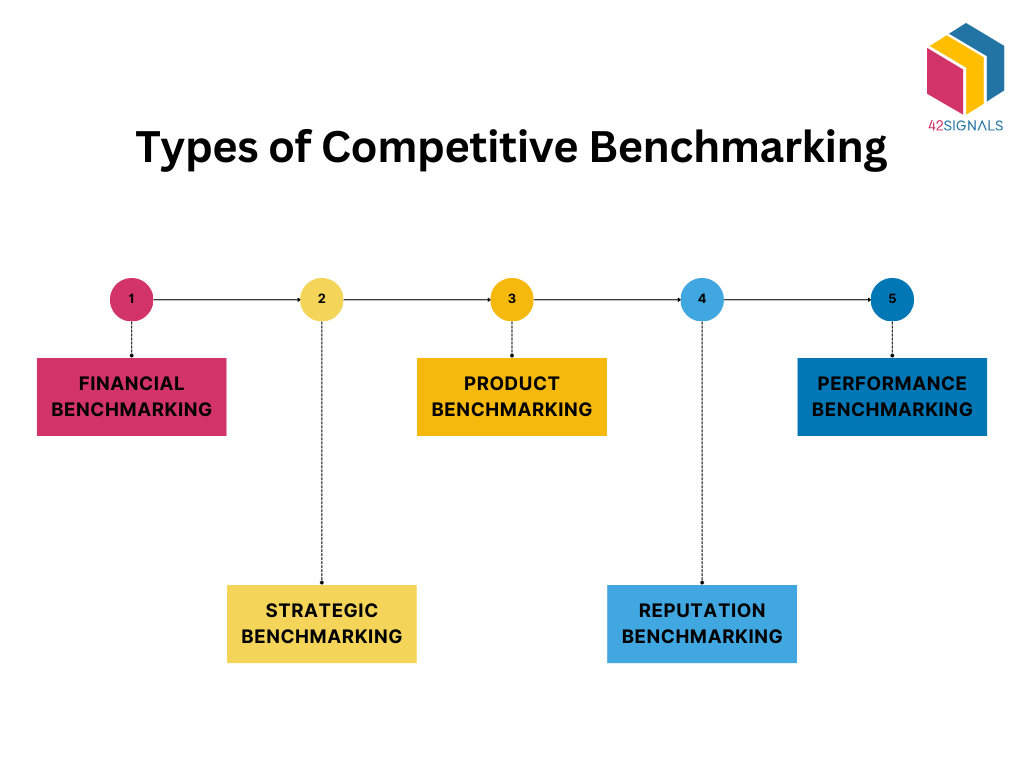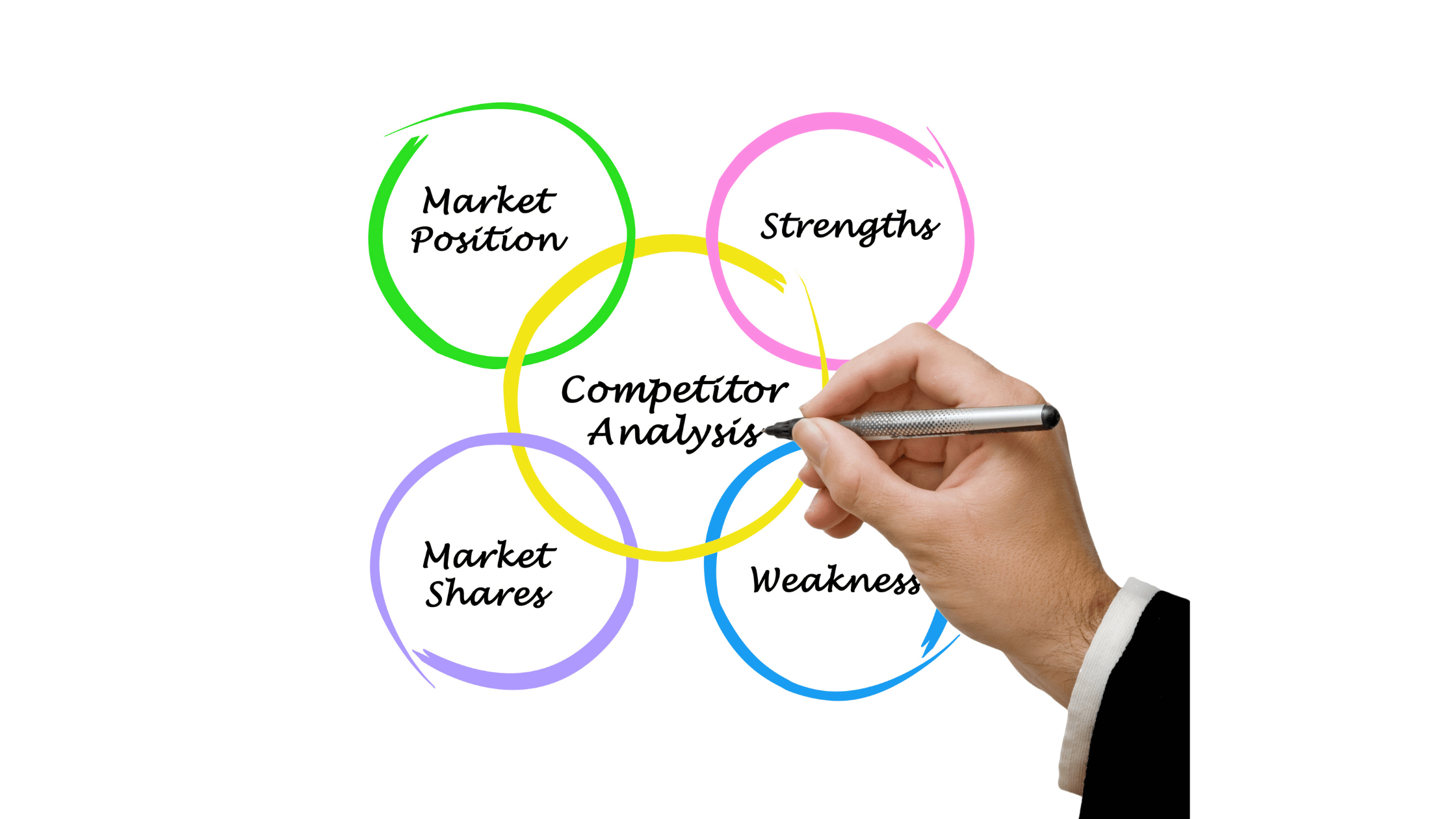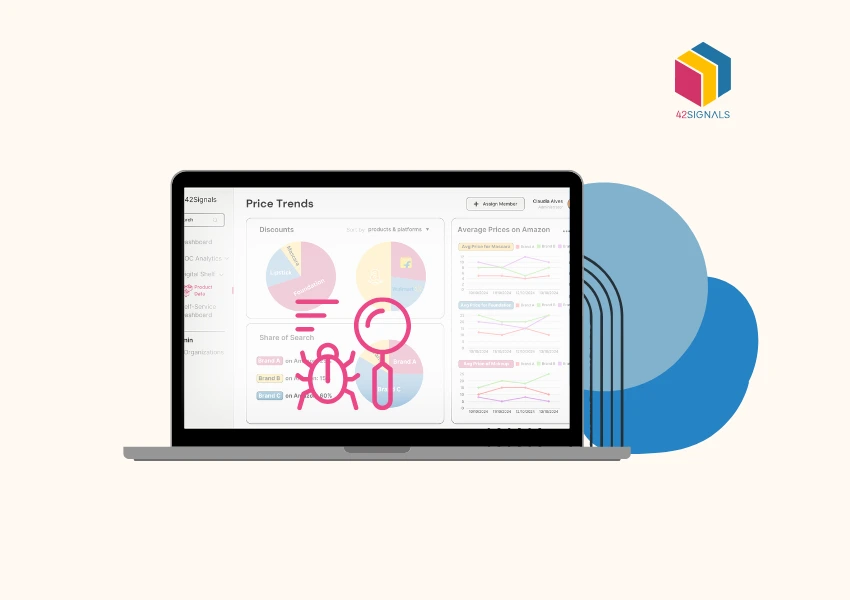What is Competitive Benchmarking?
Competitive benchmarking is a process of comparing your business’s performance, products, or services with those of your competitors to identify areas where you can improve and gain a competitive advantage.
It involves gathering information and data about your competitors’ strategies, practices, and outcomes, and then analyzing and comparing them to your own.

Image Source: Dash Hudson
Here’s an example to help illustrate competitive benchmarking: Imagine you own an online clothing store and want to evaluate your performance compared to other similar retailers. You visit their websites to analyze their product range, pricing, website user experience, customer reviews, and shipping options.
Additionally, you gather data on their sales growth, customer retention rates, and social media engagement. By comparing this information with your own company’s metrics, you can identify areas of strength and areas that need improvement.
For instance, you might discover that your pricing is competitive, but your website navigation could be improved, or that your customer reviews are positive, but your shipping options are limited.
Armed with these insights, you can make informed decisions to optimize your online store, enhance the customer experience, and gain a competitive edge in the market.
Why Use It?

Image Source: Voxco
Competition benchmarking is crucial for businesses as it provides valuable insights into their performance compared to competitors.
Analyzing key metrics like sales, market share, and customer satisfaction, can help companies gain a clear understanding of their position in the market. This knowledge helps identify areas of strength to leverage and weaknesses that require improvement.
Studying best practices, processes, and customer engagement methods empowers organizations to enhance their operations and overall performance.
Additionally, competitive benchmarking aids in setting realistic goals by understanding competitors’ performance levels. It serves as a benchmark for success, guiding businesses to outperform their rivals.
It fosters a culture of continuous improvement. Constant evaluation and enhancement of processes, products, and services drive innovation, efficiency, and customer satisfaction.
Effectively leveraging benchmarking allows businesses to gain a competitive edge, optimize operations, and achieve long-term success in their industries.
Types of Competitive Benchmarking
Competitive benchmarking can be categorized into different types based on the specific aspect being evaluated. Here are some common types:

- Financial Benchmarking: This type focuses on comparing financial performance metrics such as revenue, profit margins, return on investment, and cost structures. It helps businesses assess their financial health and identify areas where they can improve their profitability and financial efficiency.
- Strategic Benchmarking: Strategic competitive benchmarking involves analyzing the overall strategies and approaches of competitors. It includes assessing factors such as market positioning, business models, strategic partnerships, and long-term goals. Strategic benchmarking helps businesses understand how competitors differentiate themselves and formulate strategies to gain a competitive edge.
- Product Benchmarking: Product benchmarking involves comparing the features, quality, and performance of products or services against those of competitors. This type of benchmarking helps businesses identify areas for improvement, innovation opportunities, and customer preferences to enhance their product offerings.
- Reputation Benchmarking: Reputation benchmarking focuses on assessing the reputation and brand image of competitors. It involves evaluating factors such as customer perception, brand recognition, customer satisfaction ratings, and online reputation. Reputation benchmarking helps businesses understand how they are perceived in the market and identify strategies to enhance their brand reputation.
- Performance Benchmarking: Performance benchmarking compares various performance metrics across different areas of the business, such as sales, marketing, customer service, or supply chain management. It helps businesses understand their performance relative to competitors and identify opportunities for improvement.
These types of benchmarking can be utilized based on the specific needs and goals of a business. Implementing a combination of these types allows organizations to gain comprehensive insights, identify opportunities, and make informed decisions to enhance their competitive advantage.
Best Practices
Engaging in effective competitive benchmarking requires following best practices to ensure accurate and valuable results. Some best practices are:
- Define Clear Objectives: Clearly define your goals and objectives for the benchmarking process. This helps you stay focused and ensures that the benchmarking efforts align with your business strategy.
- Select Relevant Competitors: Identify competitors that are directly relevant to your industry, target market, and competitive landscape. Focus on those that pose a significant threat or have similar offerings to yours.
- Choose Appropriate Metrics: Select metrics that are meaningful and aligned with your objectives. Choose a mix of quantitative and qualitative metrics that provide a comprehensive view of performance.
- Gather Reliable Data: Collect data from credible and reliable sources. Utilize a combination of primary research, such as surveys or interviews, and secondary research, including market reports, industry publications, and public data sources.
- Ensure Data Comparability: When comparing data, ensure that you are using consistent methodologies, time periods, and definitions. Adjust for any significant differences to ensure fair and accurate comparisons.
- Maintain Confidentiality: Respect the confidentiality of competitors’ information and data. Avoid sharing or using proprietary or sensitive information without permission.
- Foster a Continuous Learning Culture: Encourage a culture of learning and improvement within your organization. Regularly communicate and share benchmarking findings with relevant stakeholders to promote knowledge exchange and drive action.
- Embrace Innovation: Look beyond direct competitors and consider benchmarking against companies or industries known for innovation and best practices. Adopting successful strategies from other sectors can give you a competitive edge.
- Monitor Industry Trends: Stay updated on industry trends, technological advancements, and changing customer preferences. This helps you anticipate shifts in the market and adapt your strategies accordingly.
- Iterate and Improve: Treat competitive benchmarking as an ongoing process rather than a one-time exercise. Continuously evaluate and refine your benchmarking approach, incorporating feedback and lessons learned to enhance effectiveness over time.
Xerox’s Case Study
Xerox is a leading copier company that implemented benchmarking initiatives as part of its ‘Leadership through Quality’ program during the early 1980s. The benchmarking concept and its implementation in various processes at Xerox are discussed in detail in this article.
The case examines how Xerox used benchmarking to compare its performance characteristics with those of its key products and services. Furthermore, the article delves into the beneficial effects of implementing benchmarking practices at Xerox.
Conclusion on Competitive Benchmarking
Competitive benchmarking is an invaluable tool for businesses to achieve remarkable success. It involves setting goals, analyzing data, and evaluating performance metrics to gain insights into strengths and weaknesses. This ongoing process allows businesses to optimize strategies, adapt to market changes, and secure a competitive advantage. Adhering to best practices such as selecting relevant metrics and involving stakeholders ensures maximum benefits while safeguarding data confidentiality.
Frequently Asked Questions
How to do competitive benchmarking?
- Identify your competitors
- Choose what to measure
- Gather data and analyze it
- Draw conclusions
- Monitor progress
What is an example of it?
An example would be a software company analyzing its user interface (UI) design compared to its competitors. They might compare elements like color schemes, layout, typography, and iconography. By gathering this data through user testing and feedback surveys, they can determine whether their UI design is intuitive, visually appealing, and easy to use compared to competing solutions. If they find areas where their design falls short, they can make improvements to better meet user needs and expectations.







